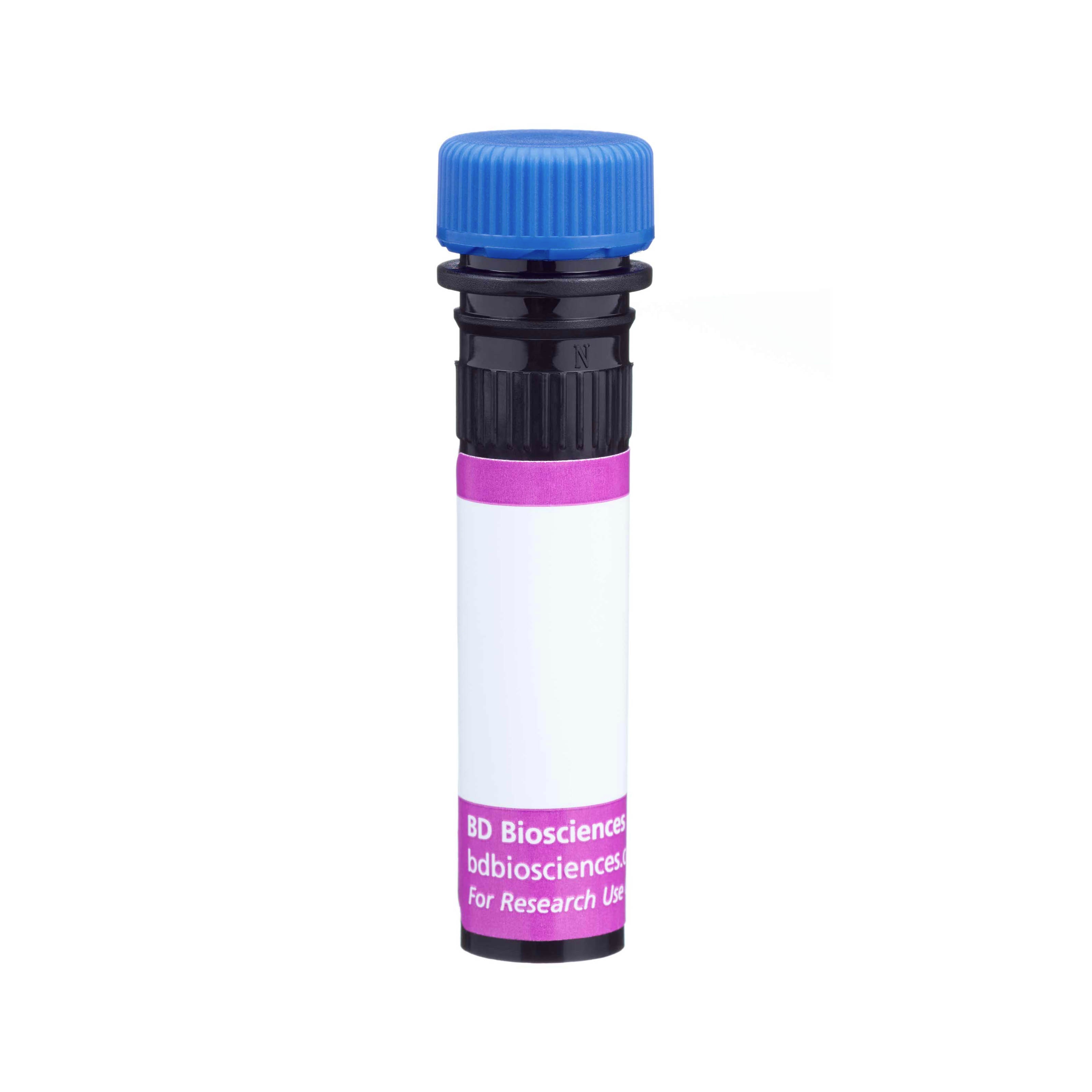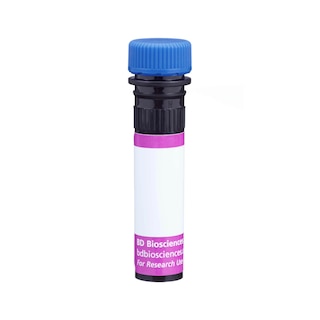-
抗体試薬
- フローサイトメトリー用試薬
-
ウェスタンブロッティング抗体試薬
- イムノアッセイ試薬
-
シングルセル試薬
- BD® AbSeq Assay
- BD Rhapsody™ Accessory Kits
- BD® OMICS-One Immune Profiler Protein Panel
- BD® Single-Cell Multiplexing Kit
- BD Rhapsody™ TCR/BCR Next Multiomic Assays
- BD Rhapsody™ Targeted mRNA Kits
- BD Rhapsody™ Whole Transcriptome Analysis (WTA) Amplification Kit
- BD® OMICS-Guard Sample Preservation Buffer
- BD Rhapsody™ ATAC-Seq Assays
- BD® OMICS-One Protein Panels
-
細胞機能評価のための試薬
-
顕微鏡・イメージング用試薬
-
細胞調製・分離試薬
-
- BD® AbSeq Assay
- BD Rhapsody™ Accessory Kits
- BD® OMICS-One Immune Profiler Protein Panel
- BD® Single-Cell Multiplexing Kit
- BD Rhapsody™ TCR/BCR Next Multiomic Assays
- BD Rhapsody™ Targeted mRNA Kits
- BD Rhapsody™ Whole Transcriptome Analysis (WTA) Amplification Kit
- BD® OMICS-Guard Sample Preservation Buffer
- BD Rhapsody™ ATAC-Seq Assays
- BD® OMICS-One Protein Panels
- Japan (Japanese)
-
Change country/language
Old Browser
Looks like you're visiting us from United States.
Would you like to stay on the current country site or be switched to your country?
BD Horizon™ BV421 Mouse Anti-Human CD7
クローン 4H9 (also known as Leu-9; Leu9) (RUO)

Multiparameter flow cytometric analysis of CD7 expression on Human peripheral blood leucocytes. Human whole blood was stained with BD Horizon™ R718 Mouse Anti-Human CD3 antibody (Cat. No. 566953) and with either BD Horizon™ BV421 Mouse IgG2a, κ Isotype Control (Cat. No. 562439; Left Plots) or BD Horizon™ BV421 Mouse Anti-Human CD7 antibody (Cat. No. 568323/568324; Right Plots). Erythrocytes were lysed with BD FACS™ Lysing Solution (Cat. No. 349202). The bivariate pseudocolor density plots showing the correlated expression of either CD7 (or Ig Isotype control staining) versus CD3 (Top Plots) or side light-scatter (SSC-A) signals (Bottom Plots) were derived from gated events with the forward and side light-scatter characteristics of intact lymphocytes (Top Plots) or leucocyte populations (Bottom Plots). Flow cytometry and data analysis were performed using a BD LSRFortessa™ X-20 Cell Analyzer System and FlowJo™ software.

Multiparameter flow cytometric analysis of CD7 expression on Human peripheral blood leucocytes. Human whole blood was stained with BD Horizon™ R718 Mouse Anti-Human CD3 antibody (Cat. No. 566953) and with either BD Horizon™ BV421 Mouse IgG2a, κ Isotype Control (Cat. No. 562439; Left Plots) or BD Horizon™ BV421 Mouse Anti-Human CD7 antibody (Cat. No. 568323/568324; Right Plots). Erythrocytes were lysed with BD FACS™ Lysing Solution (Cat. No. 349202). The bivariate pseudocolor density plots showing the correlated expression of either CD7 (or Ig Isotype control staining) versus CD3 (Top Plots) or side light-scatter (SSC-A) signals (Bottom Plots) were derived from gated events with the forward and side light-scatter characteristics of intact lymphocytes (Top Plots) or leucocyte populations (Bottom Plots). Flow cytometry and data analysis were performed using a BD LSRFortessa™ X-20 Cell Analyzer System and FlowJo™ software.





Multiparameter flow cytometric analysis of CD7 expression on Human peripheral blood leucocytes. Human whole blood was stained with BD Horizon™ R718 Mouse Anti-Human CD3 antibody (Cat. No. 566953) and with either BD Horizon™ BV421 Mouse IgG2a, κ Isotype Control (Cat. No. 562439; Left Plots) or BD Horizon™ BV421 Mouse Anti-Human CD7 antibody (Cat. No. 568323/568324; Right Plots). Erythrocytes were lysed with BD FACS™ Lysing Solution (Cat. No. 349202). The bivariate pseudocolor density plots showing the correlated expression of either CD7 (or Ig Isotype control staining) versus CD3 (Top Plots) or side light-scatter (SSC-A) signals (Bottom Plots) were derived from gated events with the forward and side light-scatter characteristics of intact lymphocytes (Top Plots) or leucocyte populations (Bottom Plots). Flow cytometry and data analysis were performed using a BD LSRFortessa™ X-20 Cell Analyzer System and FlowJo™ software.
Multiparameter flow cytometric analysis of CD7 expression on Human peripheral blood leucocytes. Human whole blood was stained with BD Horizon™ R718 Mouse Anti-Human CD3 antibody (Cat. No. 566953) and with either BD Horizon™ BV421 Mouse IgG2a, κ Isotype Control (Cat. No. 562439; Left Plots) or BD Horizon™ BV421 Mouse Anti-Human CD7 antibody (Cat. No. 568323/568324; Right Plots). Erythrocytes were lysed with BD FACS™ Lysing Solution (Cat. No. 349202). The bivariate pseudocolor density plots showing the correlated expression of either CD7 (or Ig Isotype control staining) versus CD3 (Top Plots) or side light-scatter (SSC-A) signals (Bottom Plots) were derived from gated events with the forward and side light-scatter characteristics of intact lymphocytes (Top Plots) or leucocyte populations (Bottom Plots). Flow cytometry and data analysis were performed using a BD LSRFortessa™ X-20 Cell Analyzer System and FlowJo™ software.


Multiparameter flow cytometric analysis of CD7 expression on Human peripheral blood leucocytes. Human whole blood was stained with BD Horizon™ R718 Mouse Anti-Human CD3 antibody (Cat. No. 566953) and with either BD Horizon™ BV421 Mouse IgG2a, κ Isotype Control (Cat. No. 562439; Left Plots) or BD Horizon™ BV421 Mouse Anti-Human CD7 antibody (Cat. No. 568323/568324; Right Plots). Erythrocytes were lysed with BD FACS™ Lysing Solution (Cat. No. 349202). The bivariate pseudocolor density plots showing the correlated expression of either CD7 (or Ig Isotype control staining) versus CD3 (Top Plots) or side light-scatter (SSC-A) signals (Bottom Plots) were derived from gated events with the forward and side light-scatter characteristics of intact lymphocytes (Top Plots) or leucocyte populations (Bottom Plots). Flow cytometry and data analysis were performed using a BD LSRFortessa™ X-20 Cell Analyzer System and FlowJo™ software.

Multiparameter flow cytometric analysis of CD7 expression on Human peripheral blood leucocytes. Human whole blood was stained with BD Horizon™ R718 Mouse Anti-Human CD3 antibody (Cat. No. 566953) and with either BD Horizon™ BV421 Mouse IgG2a, κ Isotype Control (Cat. No. 562439; Left Plots) or BD Horizon™ BV421 Mouse Anti-Human CD7 antibody (Cat. No. 568323/568324; Right Plots). Erythrocytes were lysed with BD FACS™ Lysing Solution (Cat. No. 349202). The bivariate pseudocolor density plots showing the correlated expression of either CD7 (or Ig Isotype control staining) versus CD3 (Top Plots) or side light-scatter (SSC-A) signals (Bottom Plots) were derived from gated events with the forward and side light-scatter characteristics of intact lymphocytes (Top Plots) or leucocyte populations (Bottom Plots). Flow cytometry and data analysis were performed using a BD LSRFortessa™ X-20 Cell Analyzer System and FlowJo™ software.







Regulatory Statusの凡例
Any use of products other than the permitted use without the express written authorization of Becton, Dickinson and Company is strictly prohibited.
Preparation and Storage
推奨アッセイ手順
BD® CompBeads can be used as surrogates to assess fluorescence spillover (Compensation). When fluorochrome conjugated antibodies are bound to BD® CompBeads, they have spectral properties very similar to cells. However, for some fluorochromes there can be small differences in spectral emissions compared to cells, resulting in spillover values that differ when compared to biological controls. It is strongly recommended that when using a reagent for the first time, users compare the spillover on cells and BD® CompBeads to ensure that BD® CompBeads are appropriate for your specific cellular application.
For optimal and reproducible results, BD Horizon Brilliant™ Stain Buffer should be used anytime BD Horizon Brilliant™ dyes are used in a multicolor flow cytometry panel. Fluorescent dye interactions may cause staining artifacts which may affect data interpretation. The BD Horizon Brilliant™ Stain Buffer was designed to minimize these interactions. When BD Horizon Brilliant™ Stain Buffer is used in in the multicolor panel, it should also be used in the corresponding compensation controls for all dyes to achieve the most accurate compensation. For the most accurate compensation, compensation controls created with either cells or beads should be exposed to BD Horizon Brilliant™ Stain Buffer for the same length of time as the corresponding multicolor panel. More information can be found in the Technical Data Sheet of the BD Horizon Brilliant™ Stain Buffer (Cat. No. 563794/566349) or the BD Horizon Brilliant™ Stain Buffer Plus (Cat. No. 566385).
Product Notices
- Please refer to www.bdbiosciences.com/us/s/resources for technical protocols.
- Caution: Sodium azide yields highly toxic hydrazoic acid under acidic conditions. Dilute azide compounds in running water before discarding to avoid accumulation of potentially explosive deposits in plumbing.
- This reagent has been pre-diluted for use at the recommended Volume per Test. We typically use 1 × 10^6 cells in a 100-µl experimental sample (a test).
- An isotype control should be used at the same concentration as the antibody of interest.
- For fluorochrome spectra and suitable instrument settings, please refer to our Multicolor Flow Cytometry web page at www.bdbiosciences.com/colors.
- BD Horizon Brilliant Violet 421 is covered by one or more of the following US patents: 8,158,444; 8,362,193; 8,575,303; 8,354,239.
- BD Horizon Brilliant Stain Buffer is covered by one or more of the following US patents: 8,110,673; 8,158,444; 8,575,303; 8,354,239.
- Human donor specific background has been observed in relation to the presence of anti-polyethylene glycol (PEG) antibodies, developed as a result of certain vaccines containing PEG, including some COVID-19 vaccines. We recommend use of BD Horizon Brilliant™ Stain Buffer in your experiments to help mitigate potential background. For more information visit https://www.bdbiosciences.com/en-us/support/product-notices.
- Please refer to http://regdocs.bd.com to access safety data sheets (SDS).
- Pacific Blue™ is a trademark of Life Technologies Corporation.
関連製品






The 4H9 (Leu-9) monoclonal antibody specifically recognizes human CD7 which is also known as T-cell leukemia antigen, T-cell surface antigen Leu-9, and LEU-9. CD7 is a ~40 kDa type I transmembrane glycoprotein that has an extracellular region with an N-terminal IgV-like domain followed by an extended O-glycosylated stalk region, a transmembrane region and cytoplasmic tail. The CD7 antigen is expressed throughout T-lymphocyte differentiation. It is present on 85% to 90% of peripheral blood T lymphocytes. In normal individuals, CD7 is expressed on all CD8+ lymphocytes, approximately 90% of CD4+ lymphocytes, and most NK cells. CD7 is weakly expressed on monocytes but not on granulocytes or B lymphocytes. It is expressed on hematopoietic progenitors and 50% of thymocytes. In leukemias, the CD7 antigen is present on the majority of T-lymphoid lineages. CD7 may function in cellular adhesion and play a role in interactions between T cells as well as T cells and B cells.
Development References (9)
-
Foon KA, Todd RF. Immunologic classification of leukemia and lymphoma.. Blood. 1986; 68(1):1-31. (Clone-specific). View Reference
-
Link M, Warnke R, Finlay J, et al. A single monoclonal antibody identifies T-cell lineage of childhood lymphoid malignancies.. Blood. 1983; 62(4):722-8. (Immunogen: Flow cytometry). View Reference
-
Palker TJ, Scearce RM, Hensley LL, Ho W, Haynes BF. Comparison of the CD7 (3A1) group of T cell workshop antibodies. In: Reinherz EL, Haynes BF, Nadler LM, Bernstein ID, ed. Leukocyte Typing II. Human T Lymphocytes. New York, NY: Springer-Verlag; 1986:303-313.
-
Picker LJ, Weiss LM, Medeiros LJ, Wood GS, Warnke RA. Immunophenotypic criteria for the diagnosis of non-Hodgkin's lymphoma.. Am J Pathol. 1987; 128(1):181-201. (Clone-specific: Immunohistochemistry). View Reference
-
Rabinowich H, Pricop L, Herberman RB, Whiteside TL. Expression and function of CD7 molecule on human natural killer cells. J Immunol. 1994; 152(2):517-526. (Clone-specific: Flow cytometry). View Reference
-
Weiss LM, Crabtree GS, Rouse RV, Warnke RA. Morphologic and immunologic characterization of 50 peripheral T-cell lymphomas.. Am J Pathol. 1985; 118(2):316-24. (Clone-specific: Immunohistochemistry). View Reference
-
Weiss LM, Wood GS, Warnke RA. Immunophenotypic differences between dermatopathic lymphadenopathy and lymph node involvement in mycosis fungoides.. Am J Pathol. 1985; 120(2):179-85. (Clone-specific: Immunohistochemistry). View Reference
-
Wood GS, Abel EA, Hoppe RT, Warnke RA. Leu-8 and Leu-9 antigen phenotypes: immunologic criteria for the distinction of mycosis fungoides from cutaneous inflammation.. J Am Acad Dermatol. 1986; 14(6):1006-13. (Clone-specific: Immunohistochemistry). View Reference
-
Zola H, Swart B, Nicholson I, Voss E. CD7. In: Zola H. Leukocyte and stromal cell molecules : the CD markers. Hoboken, N.J.: Wiley-Liss; 2007:52.
Please refer to Support Documents for Quality Certificates
Global - Refer to manufacturer's instructions for use and related User Manuals and Technical data sheets before using this products as described
Comparisons, where applicable, are made against older BD Technology, manual methods or are general performance claims. Comparisons are not made against non-BD technologies, unless otherwise noted.
For Research Use Only. Not for use in diagnostic or therapeutic procedures.